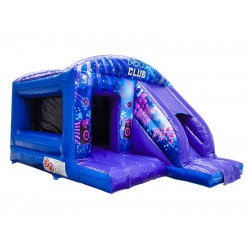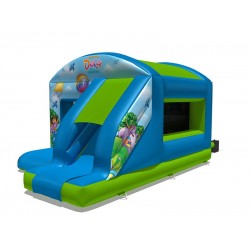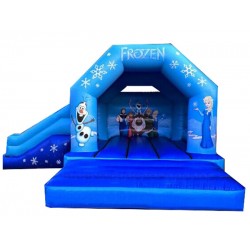How Do You Maintain and Clean an Inflatable Air Blower?
26 Aug


Maintaining and cleaning an inflatable air blower is essential for ensuring its longevity and optimal performance. Regular upkeep can prevent malfunctions, increase the blower's lifespan, and ensure safety during operation. Here’s how you can maintain and clean an inflatable air blower:
1. Regular Inspection
- Check for Wear and Tear: Inspect the blower regularly for any signs of wear, such as cracks, frayed wires, or loose connections. Pay attention to the power cord, switches, and the blower housing.
- Inspect the Motor: Listen for any unusual sounds when the blower is running, as this could indicate a problem with the motor or internal components.
2. Cleaning the Exterior
- Wipe Down the Housing: Use a damp cloth to wipe down the exterior housing of the blower. Avoid using harsh chemicals, as they can damage the plastic or paint. For stubborn dirt, a mild soap solution can be used.
- Clean the Air Intake and Outlet: Ensure that the air intake and outlet are free from debris, dust, or obstructions. You can use a soft brush or compressed air to remove any build-up that could hinder airflow.
3. Cleaning the Interior
- Open the Housing (if necessary): Some blowers allow you to open the housing for internal cleaning. If your model allows this, carefully open it following the manufacturer's instructions.
- Remove Dust and Debris: Use compressed air or a soft brush to gently remove any dust or debris inside the blower. Be cautious not to damage any internal components.
- Lubricate Moving Parts: If the blower has moving parts that require lubrication, use a manufacturer-recommended lubricant to keep them running smoothly.
4. Maintaining the Motor
- Keep It Dry: Always ensure that the blower’s motor stays dry. Avoid using the blower in rainy or wet conditions unless it is specifically designed for outdoor use. Moisture can cause electrical issues and rust.
- Allow Cooling: After extended use, give the blower time to cool down before storing it. Overheating can cause motor damage or reduce its lifespan.
5. Storing the Blower
- Store in a Dry, Cool Place: When not in use, store the blower in a dry, cool place away from direct sunlight and extreme temperatures. This will prevent damage to the motor and housing.
- Protect from Dust: If possible, store the blower in a dust-proof bag or cover it to prevent dust accumulation, which can clog the air intake and affect performance.
6. Electrical Safety
- Check the Power Cord: Regularly inspect the power cord for any cuts, frays, or exposed wires. Replace the cord immediately if any damage is found.
- Avoid Overloading Circuits: Ensure that the blower is plugged into an appropriate power source and that the circuit is not overloaded with other devices.
7. Professional Servicing
- Schedule Regular Servicing: For commercial-grade blowers or those used frequently, consider having them professionally serviced at least once a year. This can help identify any potential issues before they lead to blower failure.
Conclusion
Proper maintenance and cleaning of an inflatable air blower are essential for its effective operation and longevity. By following these steps, you can ensure that your blower remains in good working condition, providing reliable performance for all your inflatable needs. Regular care not only extends the blower’s lifespan but also enhances safety during its use.



